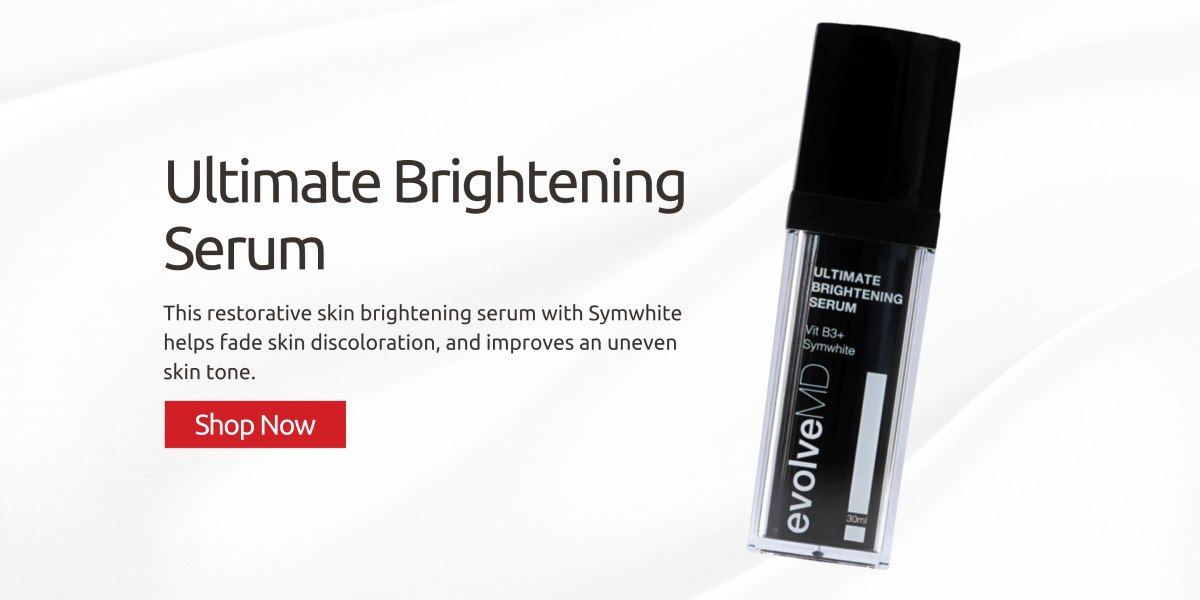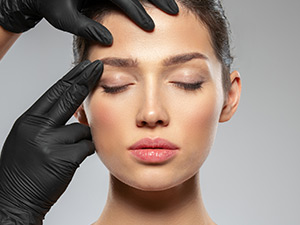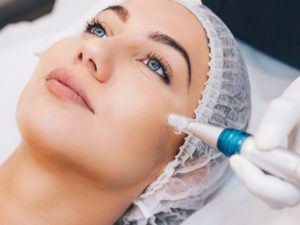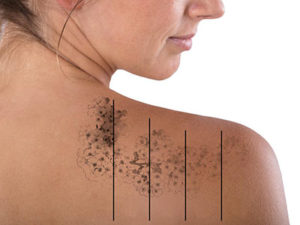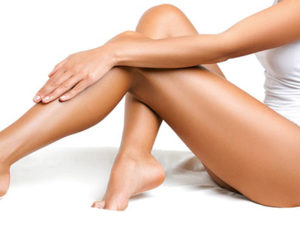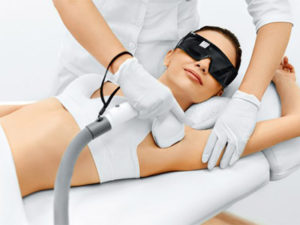Introduction
Have you ever wondered why some areas of your skin develop dark patches or brown discoloration? It’s all about pigment, specifically melanin, which plays a crucial role in determining our skin colour.
However, when melanin production goes into overdrive, it can lead to hyperpigmentation – visible spots and patches appear visible on otherwise flawless complexion.
In this blog post, we’ll dive into the causes of hyperpigmentation, explore effective solutions for pigment reduction, and offer practical tips for preventing future discoloration.
Plus, we’ll introduce you to Evolution Laser Clinic’s advanced treatments designed to rejuvenate your skin and restore its natural glow.
What is Pigment: The Building Blocks of Skin Colour
Pigment refers to the natural substances in our skin that determine its coloration. The primary pigment responsible for skin colour is called melanin. Melanin is produced by specialised cells called melanocytes, located in the basal layer of the epidermis.
Melanin comes in two main forms: eumelanin, which produces brown to black pigments, and pheomelanin, which produces yellow to red pigments. The combination and distribution of these melanin types in the skin determine an individual’s skin tone.
While melanin production is primarily influenced by genetics, environmental factors such as sun exposure, hormonal changes, and certain medications can also affect its production and distribution in the skin.
Understanding the role of melanin and pigment in skin coloration is essential for addressing pigmentation issues effectively and achieving a more balanced and radiant complexion.
Causes of Pigmentation
Sun Exposure
Sunlight contains ultraviolet (UV) radiation, which stimulates the melanocytes in the skin to produce melanin. This process is a natural defence mechanism against UV damage. When the skin is exposed to sunlight, melanin production increases, resulting in a tan as the melanin absorbs and disperses the UV radiation.
Melanin acts as the skin’s natural sunscreen by absorbing and dissipating UV radiation, thereby protecting the deeper layers of the skin from damage. It helps to prevent sunburn, premature ageing, and even skin cancer by reducing the penetration of harmful UV rays into the skin.
While melanin production is a protective response to sun exposure, excessive or prolonged exposure to UV radiation can disrupt the normal melanin production process. This disruption can lead to irregularities in melanin distribution, resulting in the formation of dark patches or spots known as hyperpigmentation. Common examples include sunspots, freckles, and solar lentigines, which often appear on sun-exposed areas such as the face, hands, and arms.
Hormonal Changes
Melasma, also known as chloasma or the “mask of pregnancy,” is a common form of hyperpigmentation characterised by dark, irregular patches on the face. It is often triggered by hormonal changes, particularly during pregnancy, hormonal contraceptive use, or hormonal therapy. Melasma typically appears on the cheeks, forehead, upper lip, and chin and is more prevalent in women, although it can affect men as well.
Hormonal fluctuations, such as those associated with pregnancy, oral contraceptive use, or hormonal therapy, can stimulate the melanocytes to produce excess melanin. Elevated levels of estrogen and progesterone, which are common during pregnancy or when taking hormonal contraceptives, can trigger melanin overproduction, leading to the development of melasma or chloasma.
Sunlight exposure plays a significant role in exacerbating hormonal pigmentation, such as melasma or chloasma. UV radiation can stimulate melanin production and darken existing hyperpigmentation, making the patches more pronounced and persistent. Therefore, individuals with hormonal pigmentation are advised to take extra precautions to protect their skin from the sun’s harmful rays, including wearing sunscreen daily and avoiding prolonged sun exposure.
Effects of Pigmentation
Beyond the cosmetic concerns, untreated hyperpigmentation can have detrimental effects on the overall health and vitality of the skin. When melanin production becomes dysregulated, it can contribute to increased vulnerability to UV damage and premature ageing. Here’s how hyperpigmentation impacts skin health:
Increased Sun Damage: Areas of hyperpigmentation have been shown to be more susceptible to the harmful effects of UV radiation. Melanin, while providing some protection against UV rays, can become overwhelmed in hyperpigmented areas, leading to sunburn, photoaging, and an increased risk of skin cancer.
Premature Ageing: Chronic exposure to UV radiation exacerbates the breakdown of collagen and elastin fibres in the skin, leading to premature ageing signs such as fine lines, wrinkles, and sagging skin. Hyperpigmentation can accelerate this process, resulting in a prematurely aged appearance.
Loss of Skin Radiance: Uneven pigmentation can detract from the skin’s natural radiance and luminosity. Instead of glowing with health, the skin may appear dull, lacklustre, and tired. This loss of radiance can further contribute to feelings of dissatisfaction and self-consciousness.
Solutions and Treatments
At Evolution Laser Clinic, we offer a comprehensive array of options for pigmentation removal. Our treatments are meticulously designed to target both superficial and dermal pigment, ensuring effective results for various pigmentation concerns.
By addressing pigmentation issues, our treatments also work to reverse the signs of sun damage and ageing, restoring a youthful and radiant complexion
Laser Pigment Reduction
Laser pigment reduction is a highly effective treatment for targeting and reducing unwanted pigmentation. Our advanced laser technology allows us to precisely target the pigment in the skin while leaving surrounding tissue unharmed.
The laser energy is absorbed by the excess melanin, causing it to break down and fade over time. This process promotes the natural healing response of the skin, leading to a more even complexion and improved skin texture.
Laser pigment reduction is suitable for treating a wide range of pigmentation concerns, including sunspots, age spots, freckles, and melasma.
Skin Needling
Skin needling, also known as microneedling or collagen induction therapy, is another effective treatment for pigmentation removal. During the procedure, a specialised device with fine needles is used to create micro-injuries in the skin. These micro-injuries stimulate the skin’s natural healing process, triggering the production of collagen and elastin.
As the skin heals, pigmented lesions are gradually diminished, revealing smoother, more even-toned skin. Skin needling is particularly beneficial for treating acne scars, sun damage, and uneven skin tone.
Pigment Peels
Pigment peels are chemical exfoliation treatments that use specialised solutions to gently remove the top layers of the skin, revealing brighter, more radiant skin underneath. These peels contain active ingredients such as alpha hydroxy acids (AHAs), beta hydroxy acids (BHAs), and retinoids, which work to slough off dead skin cells and fade pigmented lesions.
Pigment peels are customizable to suit individual skin types and concerns, with varying strengths and formulations available. They are an excellent option for addressing surface pigmentation issues, including sunspots, age spots, and post-inflammatory hyperpigmentation.
Ultimate Brightening Serum
Our Ultimate Brightening Serum is a potent topical treatment formulated to target pigmentation and promote skin brightening and rejuvenation. Enriched with a blend of powerful ingredients such as vitamin C and niacinamide, this serum works to inhibit melanin production, lighten existing pigmentation, and improve overall skin tone and texture.
Regular use of the Ultimate Brightening Serum can help to maintain and enhance the results of in-clinic treatments, ensuring long-lasting pigmentation reduction and a luminous complexion.
Practical Tips for Preventing Pigmentation
Sun Protection
Shielding your skin from the harmful effects of UV radiation is paramount in preventing pigmentation issues and maintaining overall skin health. Incorporate the following sun protection practices into your daily routine:
Daily Sunscreen: Apply a broad-spectrum sunscreen with SPF 30 or higher to all exposed skin areas, including your face, neck, arms, and hands, regardless of the weather or season. Choose a sunscreen that offers protection against both UVA and UVB rays and reapply every two hours, especially if you’re spending time outdoors or engaging in water-related activities.
Seek Shade: Whenever possible, seek shade during peak sun hours, typically between 10 a.m. and 4 p.m., when the sun’s rays are strongest. Take breaks indoors or under a canopy, umbrella, or tree to minimise direct sun exposure and reduce the risk of sunburn and pigmentation.
Protective Clothing and Accessories: Wear protective clothing, such as long-sleeved shirts, wide-brimmed hats, and sunglasses with UV protection, to shield your skin and eyes from UV radiation. Opt for tightly woven fabrics and dark colours for better sun protection, and consider using sun-protective clothing and accessories made with UPF (Ultraviolet Protection Factor) materials for added defence against UV rays.
Book your skin consultation
At Evolution Laser Clinic, we are committed to guiding you along this path to radiant skin. We invite you to take the first step by scheduling a complimentary consultation at our clinic. Our friendly and knowledgeable staff will work closely with you to assess your skin concerns, discuss any pigment-related issues you may have, and tailor a customised treatment plan to suit your individual needs and goals.
Whether you’re seeking laser pigment reduction, chemical peels, skincare products, or other advanced treatments, we have the expertise and resources to help you achieve the clear, luminous complexion you desire.



